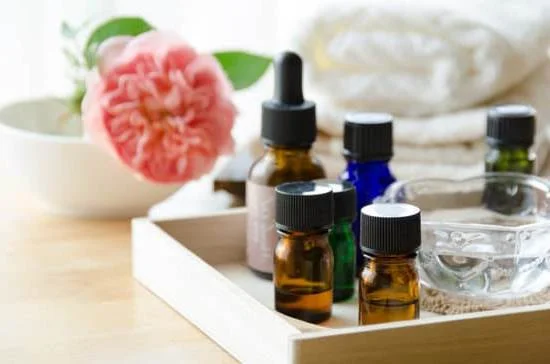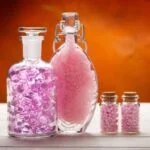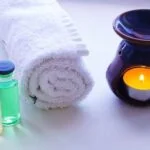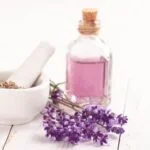A unique blend of massage and aromatherapy using a mix of essential oils has been gaining popularity as a powerful way to promote holistic wellness. This article will explore the combination of these two practices and the benefits they offer for both the mind and body.
Dating back thousands of years, massage and aromatherapy have been used in various cultures for their therapeutic properties. In this section, we will delve into the origins of these practices from a historical perspective, shedding light on how they have evolved to become the holistic healing methods they are today.
Understanding the benefits of massage and aromatherapy goes beyond just relaxation. Research has shown that these practices can help reduce stress, alleviate physical discomfort, and promote overall well-being. We will explore these benefits in detail, highlighting the positive impact they can have on one’s health.
As we embark on this journey to uncover the power of a unique blend of massage and aromatherapy using essential oils, it becomes evident that these practices are not just luxurious treats but integral components in advocating for a holistic approach to wellness. The subsequent sections will further examine the science behind aromatherapy, different types of massage techniques, tips for creating the perfect atmosphere, and real-life case studies showcasing the healing power of this unique blend.
The Origins of Massage and Aromatherapy
Massage and aromatherapy have been used for centuries as holistic healing practices, with their origins dating back to ancient civilizations. Here are some key historical perspectives on the origins of massage and aromatherapy:
- Massage: The practice of massage dates back to ancient China, India, and Egypt. In China, massage therapy was documented in the Yellow Emperor’s Classic of Internal Medicine, which is said to have been written around 2700 BCE. The ancient Indians also developed a form of massage known as Ayurveda, which is still practiced today. In Egypt, evidence of massage can be found in tomb paintings depicting people being massaged.
- Aromatherapy: The use of essential oils for their therapeutic properties can be traced back to ancient Egypt, where they were used in religious rituals, cosmetics, and medicinal preparations. The Greeks and Romans also utilized fragrant oils for bathing and massage. In the early 20th century, French chemist René-Maurice Gattefossé coined the term “aromatherapy” after discovering the healing properties of lavender oil when he applied it to a burn on his hand.
- Eastern Traditions: In addition to Chinese medicine and Ayurveda, traditional Eastern practices such as Thai massage and Japanese shiatsu also incorporate elements of aromatherapy using herbs and essential oils. These traditions emphasize the connection between mind, body, and spirit in achieving overall well-being.
The historical perspectives on massage and aromatherapy reveal the enduring appeal of these practices across diverse cultures throughout history. Their continued use speaks to their effectiveness in promoting physical and emotional healing.
Understanding the Benefits of Massage and Aromatherapy for Mind and Body
Massage and aromatherapy have been used for centuries as a means of promoting holistic wellness for the mind and body. The benefits of these practices extend beyond relaxation and stress relief, encompassing physical, emotional, and mental well-being. Massage therapy can help to improve blood circulation, reduce muscle tension, and promote overall relaxation. Aromatherapy, on the other hand, harnesses the power of essential oils to stimulate the senses and evoke positive emotional responses.
When combined, massage and aromatherapy create a unique blend that enhances the overall therapeutic experience. The gentle manipulation of soft tissues during a massage session can help the body to better absorb the aroma of essential oils used in aromatherapy. This synergy between touch and scent allows for a deeper level of relaxation and provides a greater sense of well-being.
Furthermore, both massage and aromatherapy have been found to have positive effects on mental health. They can help reduce feelings of anxiety and depression, improve sleep quality, and even boost cognitive function. By understanding the psychological impact of these practices, individuals can better appreciate the potential benefits they offer for their overall mental wellness.
The Science Behind Aromatherapy
Aromatherapy, although often associated with relaxation, is actually deeply rooted in science. The practice involves the use of essential oils, which are highly concentrated plant extracts, to promote physical and psychological well-being. Essential oils are believed to work through the olfactory system and the skin, producing a variety of effects on the body and mind.
When essential oils are inhaled, they stimulate the olfactory nerve, sending signals to the limbic system of the brain which is responsible for regulating emotions and mood. This is why certain scents can evoke specific emotions or memories. In addition to inhalation, essential oils can also be absorbed through the skin when used in massage or added to bathwater. Once absorbed, these oils can have various therapeutic effects such as reducing inflammation, easing muscle tension, or promoting relaxation.
Each essential oil has its own unique chemical composition that gives it specific properties and benefits. For example, lavender oil is known for its calming and sedative properties, while eucalyptus oil has decongestant and stimulating effects. The scientific study of these chemical compositions and their interactions with the body continues to provide insight into how essential oils can be used to enhance well-being.
The practice of aromatherapy is not just a placebo effect; there is actual scientific evidence supporting its effectiveness. Studies have shown that certain essential oils can help reduce anxiety, improve sleep quality, alleviate pain, and even enhance cognitive function. As more research is conducted on this fascinating field of study, we continue to gain a deeper understanding of how essential oils work and their potential for improving overall health and wellness.
| Essential Oil | Main Properties |
|---|---|
| Lavender | Calming, Sedative |
| Eucalyptus | Decongestant, Stimulating |
| Peppermint | Analgesic, Cooling |
Different Types of Massage Techniques to Enhance Aromatherapy Experience
Massage therapy has been practiced for thousands of years and is known for its ability to promote relaxation, reduce stress, and alleviate muscle tension. When combined with the use of essential oils, the benefits of massage are enhanced, creating a truly unique and therapeutic experience. There are various types of massage techniques that can be used to enhance the aromatherapy experience, each offering its own set of benefits.
To further enhance the aromatherapy experience, consider incorporating the following massage techniques:
- Swedish Massage: This popular massage technique uses long, flowing strokes to relax muscles and improve circulation. When combined with calming essential oils such as lavender or chamomile, it can help promote deep relaxation and stress relief.
- Deep Tissue Massage: Ideal for targeting chronic muscle tension, deep tissue massage uses slow, firm strokes to reach deeper layers of muscles and connective tissue. When paired with invigorating essential oils like eucalyptus or peppermint, it can help soothe sore muscles and provide a refreshing sensation.
- Hot Stone Massage: This technique utilizes smooth, heated stones placed on specific points of the body to help warm up tight muscles and induce a sense of deep relaxation. When paired with grounding essential oils such as sandalwood or frankincense, it can create a deeply calming and centering experience.
By choosing the right massage technique and pairing it with complementary essential oils, individuals can tailor their aromatherapy experience to address specific wellness needs while enjoying a truly holistic approach to healing.
Creating the Perfect Atmosphere
Setting the right atmosphere is essential in creating a unique blend of massage and aromatherapy. One way to do this is by using soft, ambient lighting to create a relaxing environment. Consider using candles or dimming the lights to help set the mood for relaxation. Additionally, playing soft, soothing music can enhance the overall experience, helping to calm the mind and body.
Another important aspect of setting the perfect atmosphere for massage and aromatherapy is choosing the right essential oils. Essential oils such as lavender, chamomile, and ylang-ylang are known for their calming properties, making them perfect for a relaxing massage experience. For an uplifting and energizing atmosphere, citrus essential oils like lemon or sweet orange can be used. Incorporating these essential oils into the space will help to promote the desired mood and enhance the overall experience.
In addition to lighting and essential oils, paying attention to details such as room temperature and cleanliness can also contribute to creating an ideal atmosphere for massage and aromatherapy. Making sure that the room is at a comfortable temperature and free from any clutter or distractions will help clients feel more at ease during their treatment.
| Tip | Description |
|---|---|
| Soft Lighting | Use candles or dim lights to create a relaxing environment. |
| Soothing Music | Play soft, calming music to enhance relaxation. |
| Choose the Right Essential Oils | Select essential oils known for their calming or energizing properties based on client preferences. |
The Best Essential Oils for Different Massage Techniques
When it comes to enhancing the massage experience with aromatherapy, choosing the right essential oils is key. Different essential oils offer various benefits and can complement different massage techniques. Here are some of the best essential oils for different massage techniques to help you create the perfect blend for a truly unique and holistic experience.
Swedish Massage
For a classic Swedish massage, where long, flowing strokes are used to relax and loosen muscles, lavender essential oil is an excellent choice. Known for its calming properties, lavender can help promote relaxation and reduce stress during the massage.
Deep Tissue Massage
Those who prefer a more intense massage experience such as deep tissue or sports massage can benefit from using peppermint essential oil. Peppermint has invigorating and cooling properties that can help soothe sore muscles and provide a refreshing sensation during the deep tissue massage.
Aromatherapy Massage
For an aromatherapy-focused massage, where the primary goal is to utilize essential oils for their therapeutic properties, a blend of chamomile and bergamot essential oils can be used. Chamomile is known for its relaxing and soothing qualities, while bergamot has uplifting and calming effects, making them an ideal combination for an aromatherapy massage.
When selecting the best essential oils for different types of massage techniques, it’s important to consider the client’s preferences and any potential allergies or sensitivities they may have. It’s also advisable to dilute essential oils with a carrier oil before applying them directly to the skin during a massage.
By carefully choosing the right essential oils for each type of massage technique, you can create a truly customized and effective experience that nurtures both the body and mind.
Case Studies
Releasing Muscle Tension and Reducing Stress
One of the most common benefits reported by individuals who have experienced a unique blend of massage and aromatherapy is the relief from muscle tension and stress. For example, a 35-year-old office worker who suffered from chronic neck and shoulder pain found significant relief after undergoing a series of massage sessions combined with the use of lavender essential oil.
The gentle kneading of muscles coupled with the soothing scent of lavender helped to relax tense muscles and calm the mind, resulting in improved mobility and reduced stress levels.
Improving Sleep Quality and Management of Anxiety
Another compelling case study involves a 45-year-old individual struggling with insomnia and anxiety. After incorporating a regular routine of aromatherapy massage using chamomile essential oil, this individual reported noticeable improvements in both sleep quality and overall anxiety levels. The calming properties of chamomile, combined with the relaxing massage techniques, created an environment conducive to relaxation, allowing for better sleep patterns and decreased feelings of anxiety.
Enhancing Emotional Well-Being and Confidence
In addition to physical benefits, there are also cases where individuals experienced improvements in emotional well-being and confidence through the combination of massage and aromatherapy. A 28-year-old individual dealing with low self-esteem found that engaging in regular massages using uplifting citrus essential oils contributed to a more positive outlook on life. The invigorating scents coupled with affirming massage strokes helped boost self-confidence, leading to an overall improvement in emotional wellness.
These real-life stories serve as powerful testimonials to the healing power of combining massage with aromatherapy. By addressing both physical ailments and emotional well-being, this unique blend offers holistic benefits for individuals seeking natural methods for enhancing their overall wellness.
Conclusion
In conclusion, the combination of massage and aromatherapy offers a holistic approach to wellness that addresses both the physical and mental aspects of health. This unique blend not only provides relief from physical ailments but also promotes relaxation and reduces stress, allowing individuals to achieve a state of balance and overall well-being. By incorporating techniques from both massage and aromatherapy, individuals can experience a synergistic effect that enhances the benefits of each practice.
Furthermore, by understanding the history, science, and benefits of massage and aromatherapy, individuals can make informed choices about their self-care routine. Whether it’s choosing specific essential oils for their therapeutic properties or selecting the right massage technique for their needs, this knowledge empowers individuals to tailor their wellness practices to suit their unique preferences and goals.
Ultimately, embracing the holistic approach to wellness through a unique blend of massage and aromatherapy is a powerful way to nurture both the body and mind. As more people recognize the interconnectedness of physical and emotional health, this integrated approach is becoming increasingly popular. By incorporating these practices into our lives, we can enjoy improved overall wellness while reaping the benefits of this ancient and effective healing modality.
Frequently Asked Questions
What Is a Massage With Aromatherapy?
A massage with aromatherapy involves the use of essential oils during a massage session to enhance the overall experience and potential benefits. The essential oils are selected based on the individual’s needs and preferences, and they are often chosen for their specific therapeutic properties such as relaxation, stress relief, or invigoration.
What Techniques Are Used in Aromatherapy Massage?
Aromatherapy massage techniques typically involve the application of gentle pressure and soothing strokes to release muscle tension and promote relaxation. The therapist may use a combination of Swedish massage techniques with the inhalation or topical application of essential oils to maximize the benefits of both modalities.
The goal is to create a holistic experience that addresses both physical and emotional well-being.
What Is a Ultimate Aromatherapy Massage?
An ultimate aromatherapy massage is a comprehensive treatment that combines the benefits of aromatherapy with a full body massage. This type of massage usually begins with a consultation to determine which essential oils will be most beneficial for the client’s specific needs.
The therapist then customizes the massage using a blend of essential oils that not only address physical tension but also promote mental and emotional balance, providing a truly luxurious and holistic experience for the recipient.

Are you looking for a natural way to improve your health and wellbeing?
If so, aromatherapy may be the answer for you.






